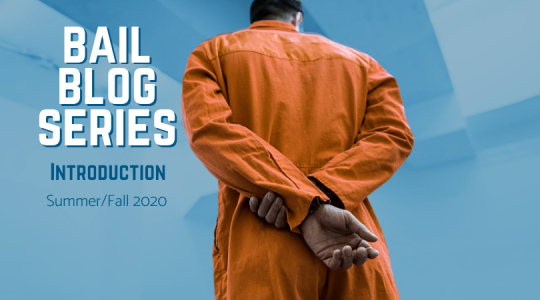
Each courtroom in the United States houses an American flag. When judges bruise their benches with gavels, it happens under the watch of our stripes and stars. Like all the other neighbors in my sleepy Iowa town, naivety and the protection of middle-class suburbia let me grow up believing that the threads of our flag are woven with liberty and justice. The ubiquitous message throughout my schooling and in my home was that I didn’t ever have to worry about jail. It was for “bad people” who did “bad things” and no one else. Not once did I have a conversation about interactions with law enforcement; it wasn’t needed. In my world, the law was protective and shiny. When I left the small-town bubble behind, I set out to understand why so-called bad people do so-called bad things—the psychology of deviance, built off my confident presumption that there was something innately different about people in jail.
***
At one end of the cramped conference room in TCJC’s Harris County HQ, my boss Jay scrawled a list of research areas on the whiteboard: Texan Stand Your Ground laws, Sugar Land’s history with convict leasing, Harris County’s bail system, and so on. The eight students in the room went line by line, each raising a hand to indicate interest in a topic. When it came to bail, I raised my hand with slight indifference. That decision—or non-decision, really—became the first of a series of events that would alter my perspective on the bail system, a transformation that I hope will continue to develop with this blog series. But first, I had to understand what bail even was.
***
I stood underneath the gray roof of the Houston Metro, nervously rolling a thin blue notebook while I waited for the train. Thirty-three minutes and ten stops later, I began to approach the steps of the Harris County Criminal Justice Center. The blue notebook was now a tight tube clenched in my hands.
The Harris County Criminal Justice Center, or HCCJC, is an imposing 20-story building that serves as the centerpiece in Houston’s ever-growing collection of courtrooms. Entering the lobby, I was acutely aware of the contrast between my skittish steps and the melancholy weighing down the families around me. Everything that made me comparable to my peers ten stops ago—growing up on the right side of income inequality, access to and investment in an education, the advantages of the model minority myth—made me an outlier here. Along hallways, heavy doors separated the promised rule of law from unforgiving adversity, systematic disenfranchisement, and inordinate racial disparity. It felt wrong to look for silver linings here.
***
Bail refers to a set of restrictions required of an individual in exchange for their release prior to trial. In the United States, bail is near-synonymous with a bail bond, or money bail. If an individual in pretrial detention wants their freedom between their bail hearing and their court date, they must pay a set bond amount, which is returned to them upon their court appearance. The origin of money bail rests on the idea of financial risk as surety, that an individual will come back to court to recover their bail bond. But the reality is a process that places poor individuals and marginalized minorities at higher risk of pretrial incarceration. Unable to afford their bond amount, people are forced to sit in a jail cell until their trial, legally innocent under the law.
Yet the harm continues: the tendency to correlate pretrial detention with criminality—rather than financial hardship—often leads to misguided judicial decision-making in the sentencing phase of trial, founded on the belief that those who are in pretrial detention are a danger to their community. Mocking a worldview where justice is blind, the money bail system systematically and disproportionately incarcerates poor and marginalized communities before they are even sentenced. Each courtroom in the United States houses an American flag—one that is bleeding red, surrendering white, and battered blue.
***
The criminal justice system relies on mass scale dehumanization, in part to discourage the public’s attention: it is harder to stand against human rights abuses when you see the people behind bars as subhuman. By shaping public opinion to associate otherized communities with criminality, the justice system has made racial and economic prejudice palatable. Academic research helps shed light on the maleficence of the system, but still does so in a way that removes individual voice. We don’t see incarcerated people as our neighbors, our coworkers, our fellow Americans, but as a flat monolith of statistics. We don’t hear their stories; we hear their numbers.
This, simply put, is dangerous. By reducing personhood to a rap sheet, we risk losing the humanity of those residing behind bars and occupying orange jumpsuits; of forgetting how their lives are entangled with our own. I hope these blog posts will serve as a conduit between people whose lives have been directly impacted by the money bail system and people like my younger self—people who have been fed an entire belief system premised on unwarranted mistrust. Everything I had been raised to believe about how the law works is false, and these stories will be the proof. By narrating the countless ways that the ability or inability to make bail impacts an individual’s life, we can come closer to unveiling the extent of the bruises that the law leaves on the people of this nation.
This blog post is part of a series sharing first-person accounts of the bail system in Harris County. Through interviews with system-impacted people, the author explores stories of the local justice system.
